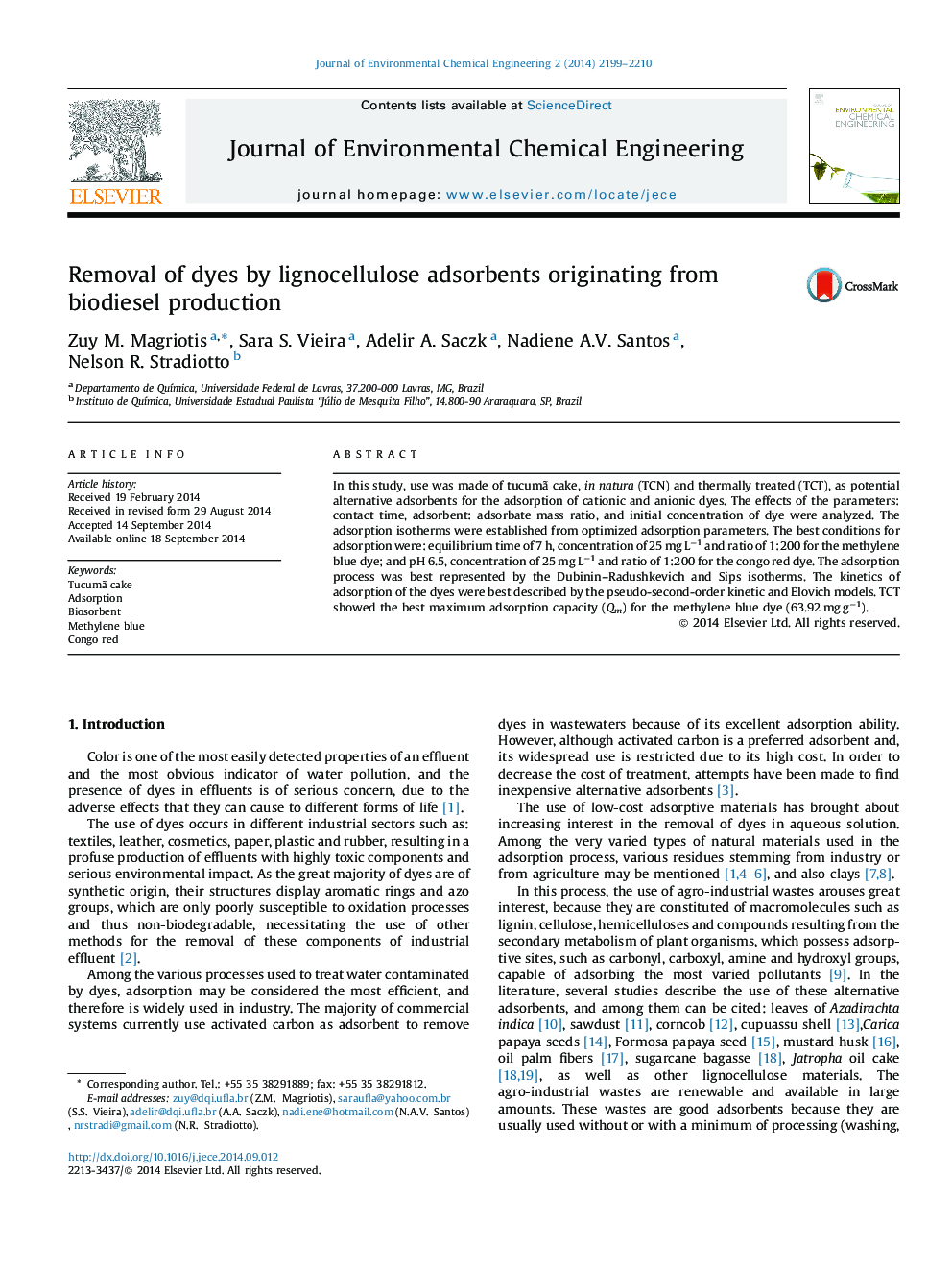| Article ID | Journal | Published Year | Pages | File Type |
|---|---|---|---|---|
| 221830 | Journal of Environmental Chemical Engineering | 2014 | 12 Pages |
•Tucumã cake has shown to be suitable adsorbent for dyes removal.•Heat treatment increases the efficiency for methylene blue adsorption.•Tucumã cake has potential as low-cost natural biosorbent for dyes removal.
In this study, use was made of tucumã cake, in natura (TCN) and thermally treated (TCT), as potential alternative adsorbents for the adsorption of cationic and anionic dyes. The effects of the parameters: contact time, adsorbent: adsorbate mass ratio, and initial concentration of dye were analyzed. The adsorption isotherms were established from optimized adsorption parameters. The best conditions for adsorption were: equilibrium time of 7 h, concentration of 25 mg L−1 and ratio of 1:200 for the methylene blue dye; and pH 6.5, concentration of 25 mg L−1 and ratio of 1:200 for the congo red dye. The adsorption process was best represented by the Dubinin–Radushkevich and Sips isotherms. The kinetics of adsorption of the dyes were best described by the pseudo-second-order kinetic and Elovich models. TCT showed the best maximum adsorption capacity (Qm) for the methylene blue dye (63.92 mg g−1).
Graphical AbstractFigure optionsDownload full-size imageDownload as PowerPoint slide
